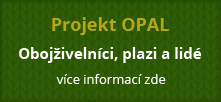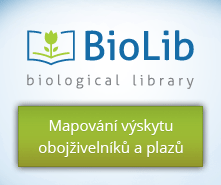Preparation of a action plan for natterjack toad (Epidalea calamita)
Project description see below
This web site was created with financial support from EEH funds 2009-2014 and from the Ministry of the Environment of the Czech Republic. The content of this web site is the sole responsibility of HERPETA and in no case can be considered as the opinion of the sponsor or the Ministry of Environment.
Project description
SUPPORT AREA II „Updating and preparation of new action planes and planes for care of particularly protected plant and animal species “
1. Project focus
The project is focused on natterjack toad (Epidalea calamita) and falls within area 1 – preparation of a new action plan. The planned activities are aimed at obtaining all data and information needed for preparation of a salvage programme (SP). One set of activities will consist in the search of literature and data sources. An essential role will be played by the field survey of known localities with both historical and recent occurrence and newly formed localities. The goal of the field survey will be to verify the incidence, to estimate the numbers of animals in the populations and to obtain data on locality characteristics. This will be followed by analysis of biotope locality characteristics. The text of the salvage programme will also contain particular management measures at the individual localities. Another imporant part will be activities associated with the project publicity.
The natterjack toad, beside the scientific (“latin”) denomination Epidalea calamita, can also be legitimately designed by the synonym Bufo calamita. The professional community vary in the opinion concerning the scientific genus name (Frost et al. 2006, Dubois et Bour 2010). However, the use of the genus name is not relevant to the main task of preserving natterjack toad as an integral part of the Czech Republic fauna. In our application, we consistently use the denomination Epidalea in accordance with the Guidelines for Applicants.
2. Methodology of proposed measures
Literature and data source search
One of the first activities will consist in the search of the literature and other information sources. Data will be used for drafting the text of the salvage programme (SP), for preparing presentations, a poster, information leaflets, and other outputs.
Information leaflets
To inform about the project, two leaflets will be issued, in 5 000 copies overall. The first leaflet, beside information on the project and natterjack toad and the link to the website containing more detailed data, will also call for providing information on the recent occurrence of the natterjack toad, or even on its earlier incidence. The second leaflet will also bring data on the recent occurrence obtained during the field survey as part of the project.
Seminars
The initial seminar (conference) both for project investigators and public is included in the activities planned for February – March 2015. The closing seminar should be held in February – March 2016. We also envisage active participation in zoology and herpetology conferences and seminars in the Czech Republic.
Field survey
We plan to verify the occurrence at the most possible number of localities. Preferred are localitites with recorded historical and recent incidence (according to the Location Database of Wildlife Preservation – LDWP, 228 recorded localities until 2014, and database BioLib). Each locality will be visited during the period April-July 2015 as many times would enable us to cofirm/reject the occurrence of natterjack toad and record the required locality characteristics. We plan one to three visits of the locality, each lasting three hours on average (differeing distance from and surface of the locality). In case of clear destruction of the locality (building, backfilling, desiccation, etc.), the time will be used for investigation of the surroundings and search for suitable stations.
We further plan to visit some newly formed localities (sandpits, etc.) in the area of natterjack toad occurrence situated close to the current stations with its known occurrence.
Methodology of recording locality characteristics
Each visited locality will be documented photographically and its characteristics that could limit the occurrence and reproduction of natterjack toad will be recorded. We will then be able to determine the surface of the locality and of larger pools using GIS. Data obtained from the locality records and subsequently from the maps using GIS will serve to assess the locality characteristics at the level of the water pool itself, associated terrestrial environment, and mutually related water surfaces and terrestrial environment (Doležalová et al. 2012).
The locality recording will contain description of the locality, GPS, number of water pools, surface area of smaller pools, depth of the pools, pool overgrowth, areas without vegetation on the bankcs, soil type, etc.
A note will contain information on negative activities (locality backfilling, recultivation, etc.) and risk factors (e.g. presence of fish, desiccation, distance from used roads).
Using a transportable device, each locality containing water pools (water bodies with stagnant water – inundated sandpits, puddles, basins, etc.) will have measured the basic water characteristics (pH, conductivity, salinity, dissolved oxygen content) that influence amphibian reproduction (Gislén et Kauri 1959, Ferreira et Jesus 1973 ex Wells 2007, Solský 2013).
Records on individual occurrence
Each visit on a locality with recorded natterjack toad occurrence will record the number of individuals, stage, sex, and potential estimate of the order of numbers (tens, hundreds, or thousands in case of tadpoles). The estimation may also be done in case of high occurrence of vocalizing males. The estimate of the numbers in the population and determination of reproduction in the locality are important factors defining further potential management intervention.
A note will contain informatin on the health status of the toads, apparent damage or hornified skin, potentially caused by chytridiomycosis.
Processing of locality recordings
All locality recordings will be processed and the information will serve as a basis for drafting the text of SP. The identified biotope characteristics will be processed and prepared for statistical analyses. The recordings on the toad occurrence will be entered to the LDWP database.
Statistical analysis
The recorded biotope characteristics (including watee properties) will be statistically processed using generalized linear models (GLM) (Doležalová et al. 2012, Solský 2013) and then evaluated. The aim is to find out what characteristics of the environment have a general effect on the presence or number of natterjack toad. A demonstrable effect of a particular factor (both positive and negative) will help in the subsequent protective measures adopted. In each locality we will thus take as a basis the general results obtained by statistical analyses and we will also take into account the specific features of each locality.
Using GIS we can also obtain other characteristics of the localities (e.g., temperature, precipitation, soil) and use them for modeling of the species occurrence (SDM – species distribution modelling) (Kozak et al. 2008, Rödder 2009, Brejcha 2013, Civiš 2013). Linking the characteristics obtained directly in the locality with the presence or absence of toads using BIOCLIM tools (Busby 1991) or MaxEnt (Phillips et al. 2006), we will obtain the map of potential occurrence of natterjack toad and in the following years, this will enable better monitoring of its incidence in these areas.
SP text processing
All data and information obtained will be implemented in the SP text, which will be drafted according to the Synopsis for SP Processing contained in the Concept of salvage programmes and programmes for care of particularly protected animal and plant species in the Czech Republic, Ministry of the Environment CR, NCA CR, 2014. The text will contain, as an integral part, a proposal of particular management measures at individual localities.
Available data sources:
Action planes:
Concept of action planes and planes for care of particularly protected animal and plant species in the Czech Republic (including appendix Synopsis for SP Processing), Ministry of the Environment CR, NCA CR, 2014
http://www.nature.cz/publik_syst2/files/koncepce_zp_final_2014.pdf
Action planes for endangered species, http://www.zachranneprogramy.cz
natterjack toad (Epidalea calamita) http://www.zachranneprogramy.cz/index.php?docId=6868&spec=zivocichove
Team of investigators:
RNDr. Martin Šandera, Ph.D.
He contributed to preparation of the methodology for monitoring amphibians and reptiles in the Czech Republic. He is involved in mapping the occurrence of and monitoring amphibians and reptiles. He has supervised Bachelor and diploma theses related to topics in zoology at the Faculty of Science, Charles University in Prague (FS CU). He lectured and conducted practical training in zoology for FS CU students, and now he contributes to the practical part of the lectures of Batrachology and Herpetology at the Czech Agricultural University in Prague. He presents these topics in media and gives lectures for public on various biology and ecology themes; he is involved in environmental education, training and edification. From the beginning, he is administrator of the database “Mapping of the Occurrence of Amphibians and Reptiles” at BioLib, the approved data of which are automatically transferred to the LDWP database.
Ing. Petr Hesoun
Among other, he is engaged in batrachologic and herpetologic inventory surveys, monitoring of amphibian and reptile localities, processing of plans for care of protected areas and presentation of results and data both to the public and students.
Mgr. David Fischer
He contributed to preparation of the methodology for monitoring amphibians and reptiles in the Czech Republic and monitoring for inventory surveys. He is involved in mapping the occurrence of and monitoring amphibians and reptiles. By field activities he contributed to acquisition of data for some student works and various publications. He is author of the Strategy for Preservation of Autochthonous Crayfish Species in the Czech Republic (conceptual material for activities administered by the Ministry of Environment) (Fischer et al. 2009).
Jiří Mařík
He is involved in long-term mapping the occurrence of and monitoring amphibians and reptiles. By field activities he contributed to acquisition of data for some student works and various publications.
Mgr. Jan Šamata
He has been engaged in long-term theoretical and practical wildlife preservation. He is author of plans for care of protected areas and inventory botanical as well as zoological surveys.
Ing. Zdeněk Vitáček
He is involved in mapping the occurrence of amphibians and reptiles. In the region of Českolipsko he is engaged, among other, in implementation of the magament measures at the localities of natterjack toad (Project of stabilization, multiplication of population and improvement of the condition of localities with critically endangered natterjack toad (Epidalea calamita) – 2012 in the region of Českolipsko at locality Provodín - Srní).
Mgr. Radomír Studený
He is involved in mapping the occurrence of amphibians and reptiles and wildlife preservation, and in practical implementation of management measures particularly at the amphibian localities.
Mgr. Jaromír Maštera
He is involved in long-term mapping the occurrence of and monitoring amphibians and reptiles. He is extensively engaged in management interventions namely in wetland localities. He contributes to preparation of manuals related to the management of wetlands and to publications on amplibians. Until August 2014 he was employed by the LDWP CR database and the above-mentioned activities represented his working tasks.
Mgr. Zdeněk Mačát
He is engaged in herpetology in general and actively participates in mapping amphibians and reptiles. He supervised Bachelor theses and lectures at the Palacky University in Olomouc. He is administrator of the database Mapping of the Occurrence of Amphibians and Reptiles at BioLib and co-author of web Naturabohemica.
Ing. Jiří Vojar, Ph.D.
He contributed to preparation of the methodology for monitoring amphibians and reptiles in the Czech Republic. He completed tens of biology surveys and assessments. He lectures on herpetology and wildlife preservation and has also supervised diploma and Bachelor theses (related to mapping, monitoring and practical preservation of amphibians and reptiles) at the faculty of Environment of the Czech Agricultural University in Prague.
Ing. Marcela Šanderová
She is involved in environmental education, training and edification. She is experienced in administration and accounting of grants obtained by the Museum of Nature “Czech Paradise”.




